American multipurpose fighter F-23 Black Widow II
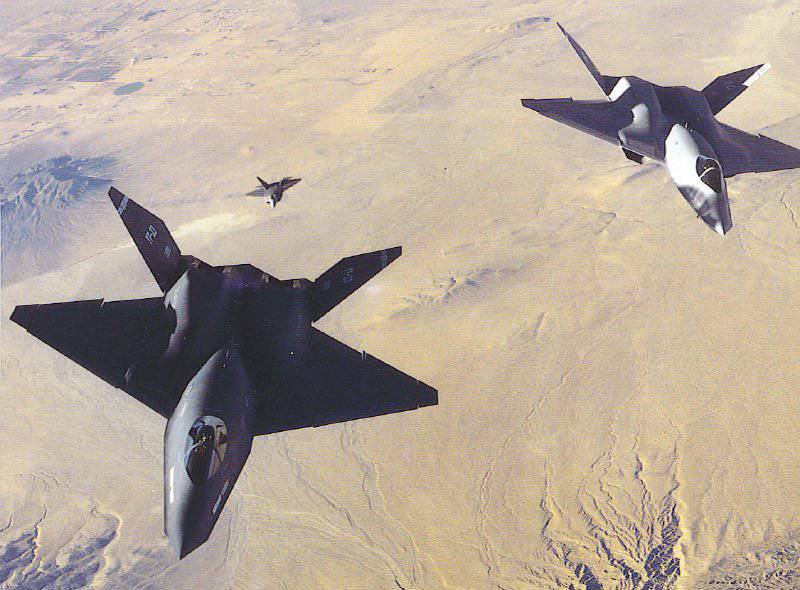
Among the main requirements put forward to the new aircraft were: cruising supersonic flight speed when the engine is operating in the afterburner mode; low visibility; the possibility of operation from the runways up to 915 m (initially required length - 455-610 m); increased maneuverability at supersonic and subsonic speeds; high efficiency in air combat. At the same time, “shock” requirements from the specification of the US Air Force were completely excluded. It was considered that the most important task of a fighter, for the sake of which the rest of its functions can be sacrificed, is the conquest and retention of air domination.
In September 1983, seven American companies: Boeing, General Dynamics, Lockheed, Grumman, McDonnell Douglas, Rockwell and Northrop, began to shape the look of the ATF. 31.10.1986 announced the selection of Boeing / Lockheed / General Dynamics and McDonnell-Dutlas / Northrop groups of companies to build demonstration competing YF-22 and YF-23 aircraft (each group of companies had to create two aircraft ). The lead contractors were Lockheed and Northrop. With these companies have been concluded contracts in the amount of 818 million dollars. Each group of firms on one of the aircraft was supposed to install the Pratt-Whitney YF119 engine, on the other, the General Electric YF120 engine (engines were also developed according to the competitive program).
The first of the two airplanes, the YF-23, made the first flight of 27 in August of 1990. In memory of the two-gated night fighter from World War II, the design of John Northrop YF-23 was given the name Black Widow II - Black Widow. This aircraft differed from its competitor - YF-22 - a high degree of novelty embedded in the design. The boldness of experimentation in the development of new aircraft has always been peculiar to engineers at Northrop. Externally, the Black Widow was like a fugitive from the 21st century. Probably, the novelty of the project was the reason for the abandonment of the aircraft. History quite banal.
In accordance with the achievements of the "Stealth" technology and the aerodynamics of the YF-23, it had an integrated aerodynamic scheme, a rhomboid mid-wing with cut-off tips, V-shaped tail. The developers focused on improving the supersonic characteristics, reducing the radar, visual and infrared visibility of the aircraft. At YF-23, radio absorbing materials and low reflective external forms were used. In terms of the plane had contours that were formed by straight lines. As a result, the number of directions of the peak of the reflection of radar waves decreased to four, and the radar visibility of the aircraft from other angles was reduced very significantly. The rear and front edges of the full turning V-shaped tail surfaces in the plan were parallel to the edges of the wing. The edges of all the flaps, the main skin panels, including the rear and front edges of the weapon compartments, the rear fuselage section and the rear edges of the upper flaps of the nozzles, had a zigzag shape. Connections of fixed and mobile structural elements of the aircraft were also given a specific form in order to reduce reflections of the incoming radar signal. The fuselage-gondola, in which the cabin and weapons compartment were placed, for the same purpose was given a hexagonal cross-section. Engine nacelles, fuselage and wing had a smooth mate. Exactly the same solution was applied on the Northrop B-2 Spirit Spirit bomber-stealth.
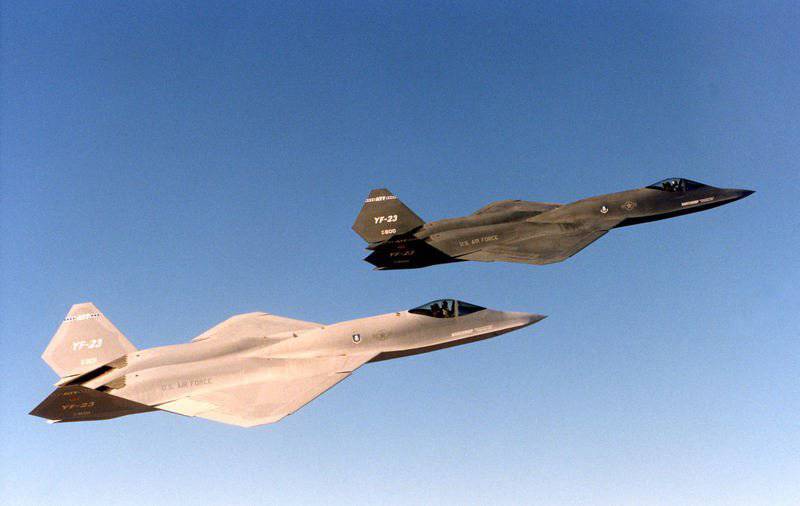
In the design of both fighters, which were created under the ATF program, they used advanced structural materials, such as polymer composites, aluminum-lithium alloys, metal matrix composites. Polymer composites have found the widest application; their share in the airframe design of an experienced YF-23 (by weight) reached 25 percent. For use in the construction of the aircraft studied thermoplastic material created on the basis of polyetherketone binder and carbon fibers with the index AS-4.
The wing had rejectable single-section socks, ailerons and flaps, which also served as air brakes (during braking, the outer surfaces were deflected upwards, and the inner ones - downwards). Wing extension - 2, sweep angle along the trailing and leading edges - 40 degrees, central chord - 12,22 meters, end chord - 1,01 meters, wing constriction - 12,1.
Along the sides of the aircraft from its nose to the root parts of the wing were narrow small side overhangs, having a sharp outer edge. These flows were used to generate vortexes during maneuvering at high angles of attack, to prevent uncontrolled yaw of the aircraft. The single cabin was located high and relatively far ahead of the wing. This, in combination with the edge of the windshield and the curved sides of the cockpit, provided the pilot with an excellent overview back-to-side and forward-down. The ejection seat of the McDonnell Douglas NACES II ensured emergency escape of the aircraft in flight at speeds up to 1150 km / h and parked.
The desire to obtain high characteristics at large angles of attack led to a wide separation of the surfaces of the V-shaped tail, inclined 45 degrees outwards, turning completely and providing control both in yaw and in pitch.
The chassis is a three-axle, with one-wheel lever pillars, designed for landing at a vertical speed of 3,05 meters per second without leveling. The main rack was removed by turning back, the front - forward.
The two Pratt-Whitney forced-bypass turbojet engines F119-PW-100 with a constant moderate bypass ratio are a further development of the F100 family of engines. The maximum static thrust of the first series of turbopumps was 13900 kgf, in the future it could be increased to 15900 kgf.
The General Electric F120 engine had a more interesting design. To optimize the specific fuel consumption in different flight modes, the F120 could change the degree of bypass in flight: it was more on dialing, on supersonic - it was reduced due to the presence of air flaps between the fan and compressor ducts. However, in spite of its flawless performance, the General Electric engine, in terms of design complexity and cost characteristics, lost to the Pratt-Whitney product. By the way, for this reason, F119 was chosen as the power plant for the F-22 fighter that won the ATF competition.
The side wing air intakes of the engines had S-shaped channels that shielded the first stages of the engine compressors — the most reflective structural elements of any aircraft — from direct exposure to enemy radars. Inside the tracts of the intakes were covered with radio absorbing material. The inclination of the side walls of the air intakes corresponded to the inclination of the surfaces of the V-shaped tail. In the front root parts of the wing were located on top of the wing air bypass, regulating the mode of operation of air intakes.
The engine nozzles were flat. This form, despite the loss of thrust due to the suboptimal shape of the nozzles, significantly reduced the visibility of the aircraft. In contrast to the F-22 thrust vector control system was not provided: only the upper flap of the nozzle was made movable. It was used to regulate the flow area of the nozzle, as well as to reverse the thrust during landing. From the nozzles, the jet streams flowed out between the tail consoles on top of the tail fuselage above the flat surface, which suppressed infrared radiation and additionally shielded the engines from direct observation from behind. The thrust vector control system required by the F-22 built according to the classical aerodynamic design on the F-23 seemed to be a heavy, expensive and unnecessary overkill: a scheme with heavily collapsed V-shaped tail, not losing efficiency at high angles of attack and at low speeds, allowed The Black Widow can even carry out intensive maneuvers with fixed nozzles. It was necessary only to develop appropriate laws of management.
The aircraft installed a digital EDSU with fiber optic data lines and a central control stick in the cockpit. The architecture of the on-board complex for serial aircraft should have included a powerful on-board multiply redundant IBM-compatible computer. The computer was supposed to take over the functions of a large number of onboard systems. Including life support systems, EDSU, navigation system management, target detection and identification, communications system, power plant, weapon control, passive and active jamming system, and the like. In fact, the pilot was isolated directly from the controls: he had only to give commands to the on-board computer, which controls the aircraft at its own discretion. By the way, today this architecture was implemented on serial F-22. As computer hardware components improved, the boards and blocks in the aircraft’s electronic brain would be replaced with more advanced ones.
To obtain data on barometric altitude, airspeed, angle of attack, demolition, etc., the aircraft was equipped on the sides of the nose of the fuselage with multi-function LDPE rods. There were openings for non-protruding air pressure sensors on the bottom and on the side of the nose. The Northrop company has developed a system that is capable of obtaining all the necessary air parameters using non-protruding sensors, even during supersonic flight. It was assumed that the LDPE rods will be used to test non-protruding sensors, and then dismantle them altogether in order to reduce the visibility. On the production aircraft it was supposed to use means of protecting the pilot (from polarization of the cockpit glazing) and equipment from laser weapons.
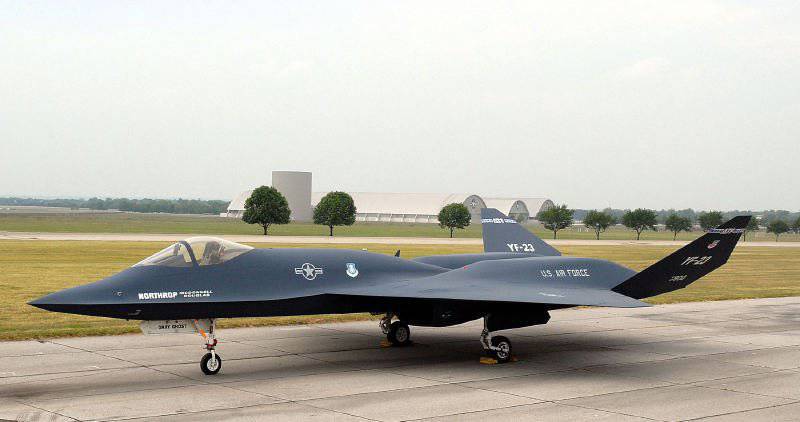
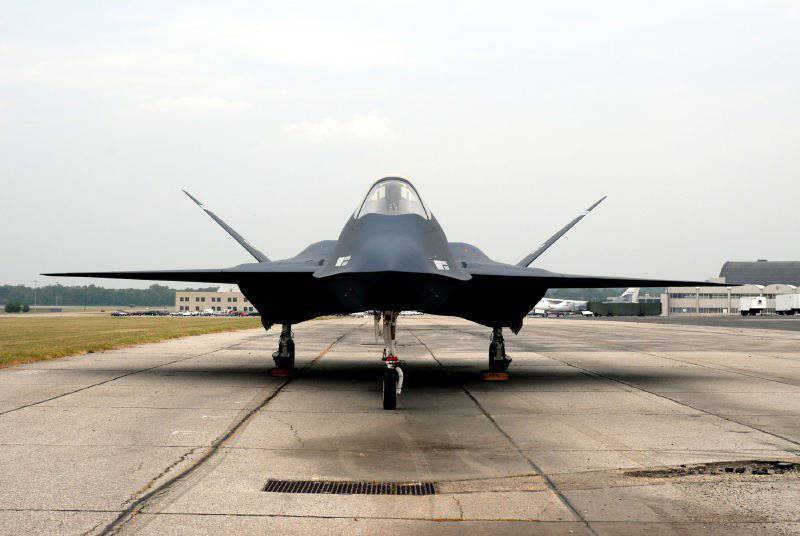
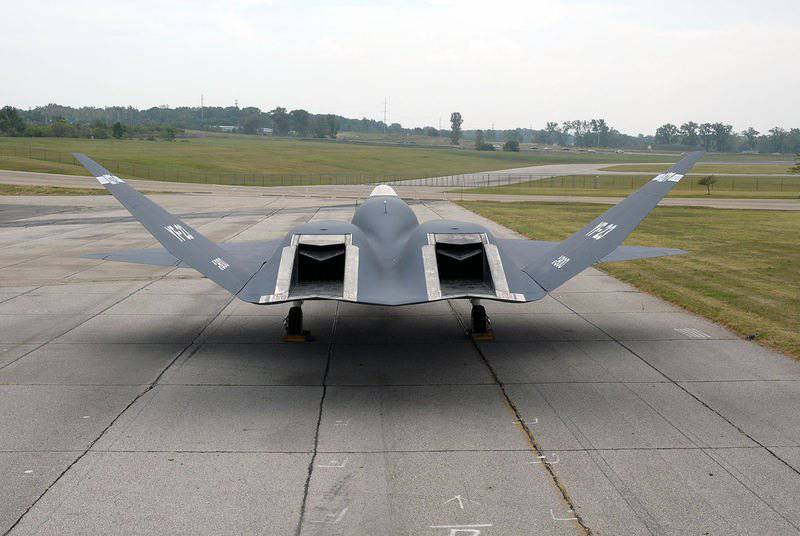
The composition of the target equipment “Black Widow” was supposed to include a high-power radar with numerous headlights (phased array), “smeared” along the edges of the fuselage, plumage and wing. As a result, the range of the circular radar survey would be 70-90 kilometers. However, the use of active radar in battle greatly unmasks the aircraft, so the creators of the F-23 airborne complex relied heavily on passive sensors that capture the radiation of enemy RAS, and on tactical reconnaissance information that comes from JSTARS and AWACS airplanes and satellites in real time. Thus, the 5th generation fighter was to become one of the elements of the information and combat field, focusing on the game "in a team", and not on single actions. The signals that came from external sources and from passive sensors had to be processed by a computer, giving the pilot data in the form of a list of targets with marks of their location, the degree of potential threat and priority in accordance with the task, indicating the type and nationality of the aircraft. The pilot had only to choose a target and launch a missile with passive infrared or active radar guidance. The aircraft could carry up to 8 short-range AIM-9 Saidu-Inder and medium-range AIM-120 AMRAAM air-to-air guided missiles in various combinations in accordance with the mission. The missiles were placed in the internal armament compartments of the tandem located in the fuselage and closed with two 5 m long wings. The missiles had to be pushed out of the compartment using hydraulic guides - pushers. It was also planned to install a built-in gun - a variant of the six-barreled M61A1, which worked well on navy and in the Air Force, with an elongated barrel unit. On the prototypes, the gun was not installed. Possible options for placing the gun were provided in the lower part of the nose cone, in front of the cockpit or at the root of the left wing. On 4 external nodes of the suspension, it was possible to install existing weapons or fuel tanks for distillation flights. The Black Widow was developed exclusively as an interceptor and fighter of air combat, so the suspension of air-to-ground missiles or bombs was not considered at all.
During the demonstration and evaluation tests, two prototypes of the “Black Widow” until the end of 1990 in 50 flights flew 65 hours. At an altitude of 15240 meters, the maximum number M = 1,8 and the afterburner cruising number M = 1,6 were reached. The aircraft showed excellent maneuverability, surpassing its competitor in handling and stability at supersonic and large angles of attack. After the Black Widow’s refusal of the Air Force, the program was completely curtailed, despite positive assessments of the world’s machine aviation the press, as well as some representatives of the Pentagon. The choice of the prototype of the 5th generation fighter of the Boeing and Lockheed firms is explained by several factors: conservatism of military thinking, which always preferred a plane that has a more familiar look; Lockheed’s financial situation was much worse than that of Northron, which already had an expensive strategic bomber V-2 contract by the beginning of work on the Widow. And, finally, “Black Widow” as an aircraft with a higher novelty rate, despite the obvious promise, required much higher financial costs for refinement to the series. After abandoning the program, both prototype aircraft were handed over to NASA to investigate load calibrations. Both machines are currently in flight museums in flight condition.
Aircraft performance characteristics:
Modification - YF-23;
Wingspan - 13,29 m;
The length of the aircraft - 20,54 m;
The height of the aircraft - 4,24 m;
Wing area - 87,80 m2;
Empty curb weight - 16800 kg;
Take-off weight - 29000 kg;
Fuel stock - 10900 l;
Engine type - 2 dual turbojet forced engine Pratt Whitney YF-119 (General Electric YF-120);
Static forced traction - 2x155 kN;
Cruising speed - M = 1,5;
Maximum speed - M = 1,8;
Practical ceiling - 20000 m;
Combat radius of action - 1500 km;
The length of the runway - 915 m;
Maximum operating overload - 6;
Estimated vertical speed when landing - 3,05 m / s;
Crew - 1 man;
Armament:
- built-in gun М61А1, caliber 20 mm;
- installation of up to 8 AIM-120 and AIM-9L air-to-air missiles is possible;
- on the external nodes can install existing conventional weapons.
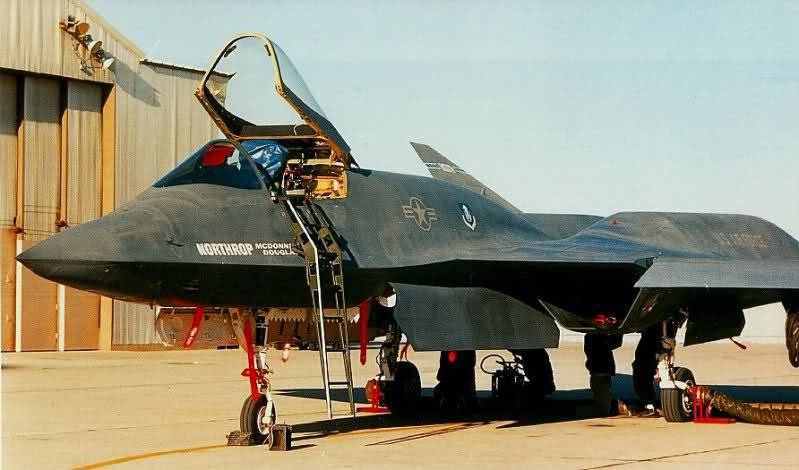
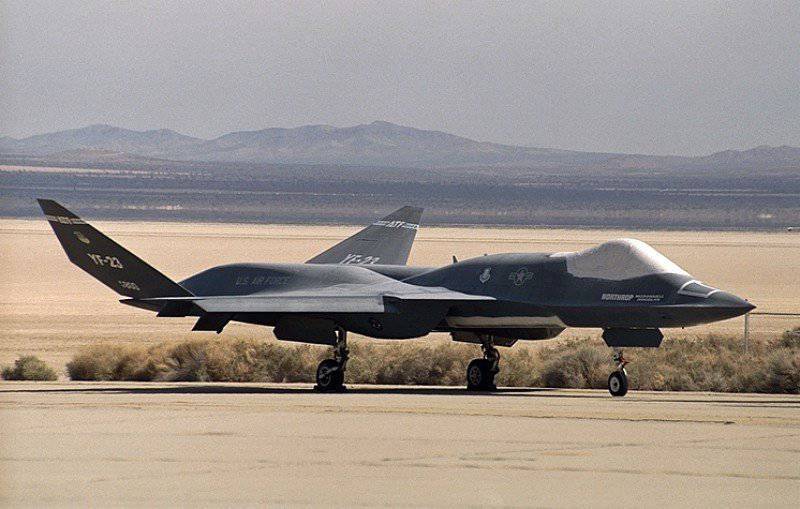
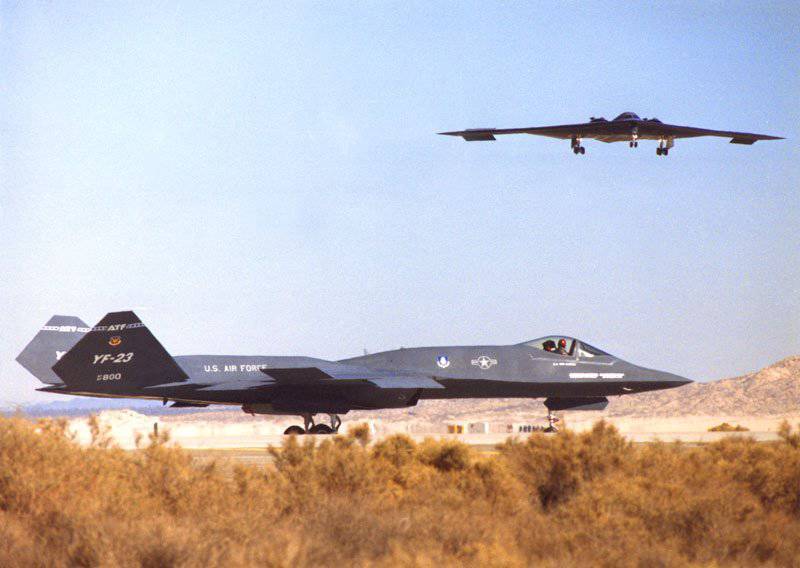
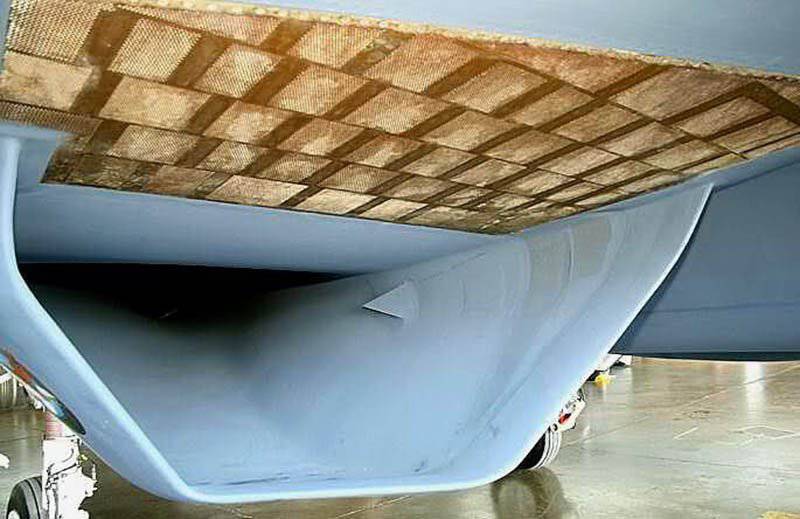
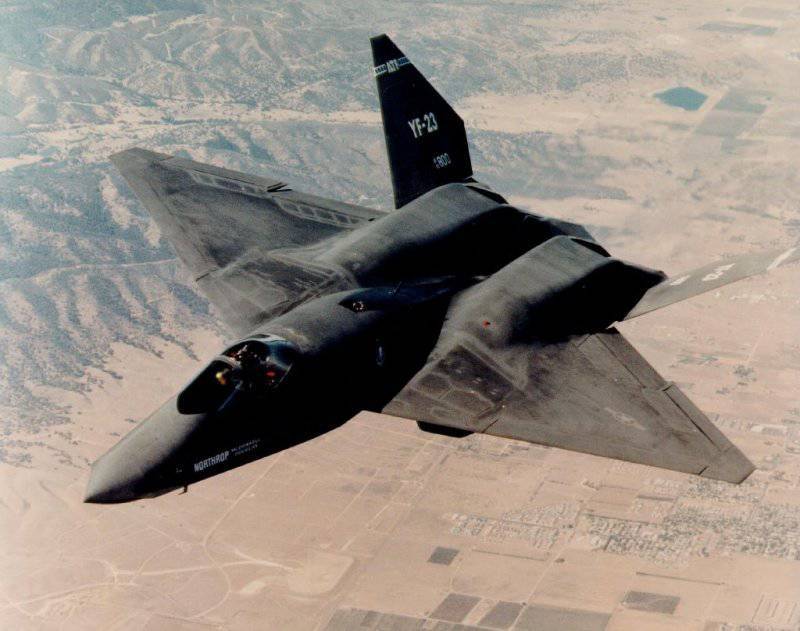
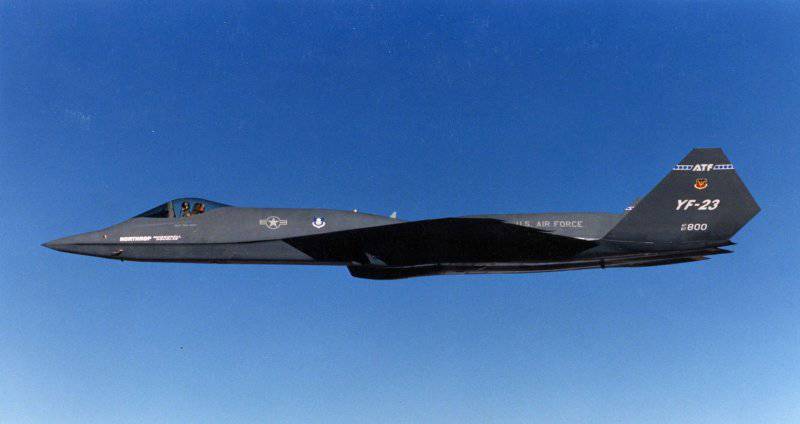
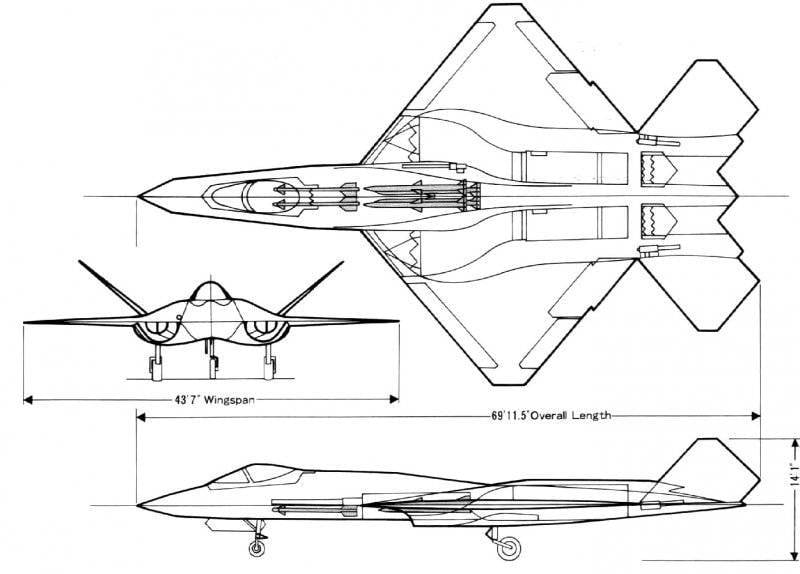
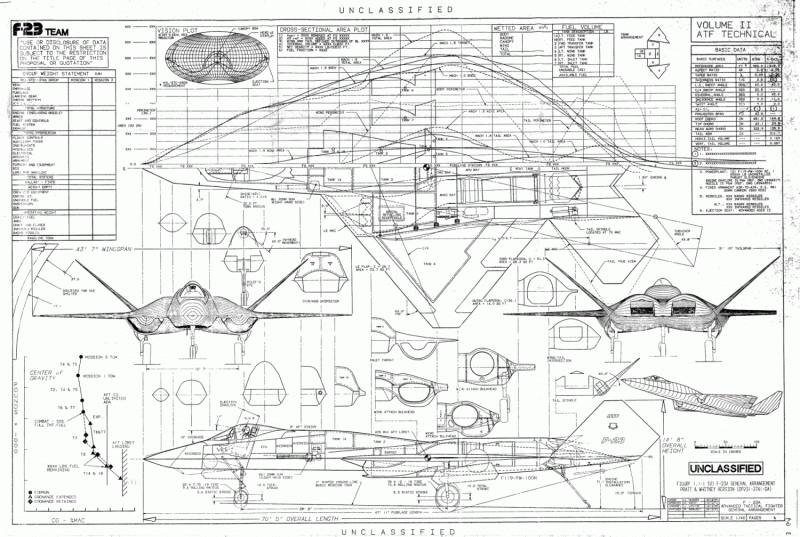
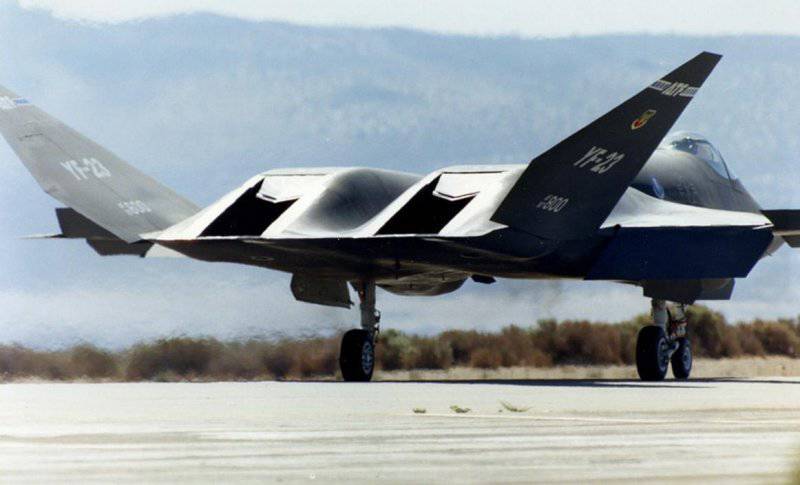
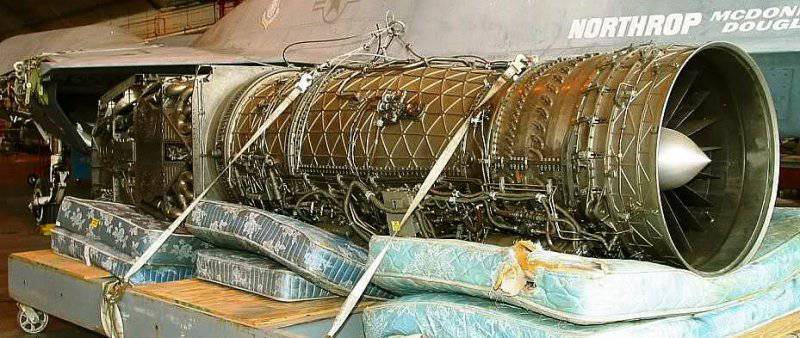
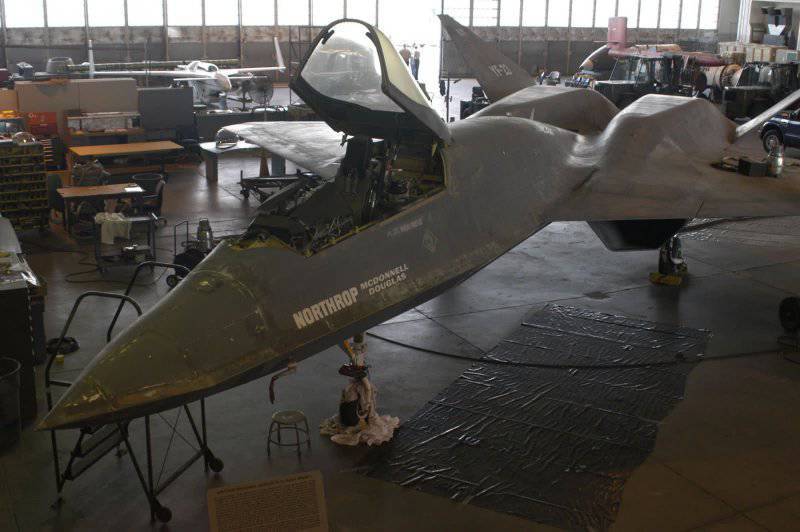
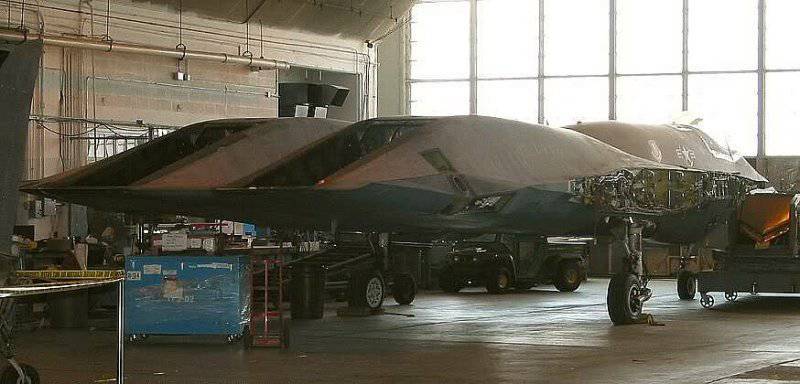
Information